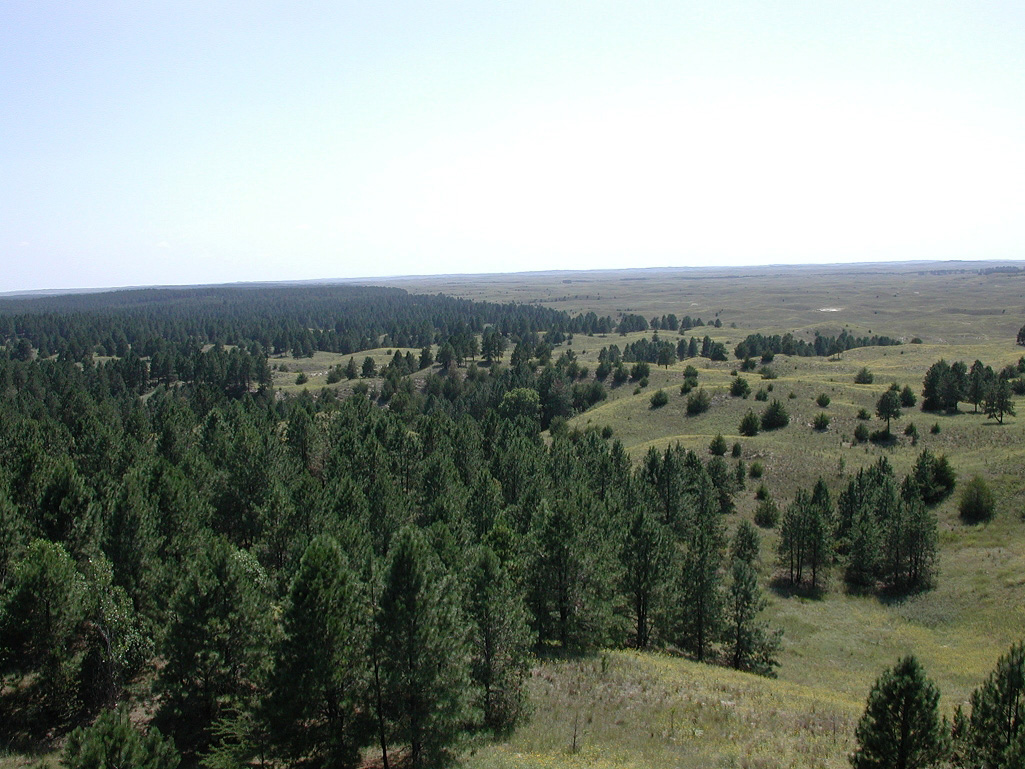|
|
|
|
|
|
| In
the midst of the sandhills of Nebraska, an improbable forest stands. Planted
by hand in the early 1900's, it covers 90,000 acres of gently rolling sandhills
interspersed with 20,000 acres of trees. Ponderosa pine, Eastern redcedar,
and jack pine are the three major tree species, with the sandhills dominated
by grasses- primarily sand bluestem (Andropogon hallii), Calamovilfa
longifolia, and needle-and-thread (Stipa comata).
In the late 1880's, Dr. Charles E. Bessey of the University of Nebraska envisioned planting a forest in the sandhills of Nebraska. His botanical surverys in the region had convinced him that the area had been previously forested and could be again. By 1902 much of the country's eastern forests had been harvested or burned, so the need for timber provided an impetus. Eventually Dr. Bessey wrote to President Theodore Roosevelt detailing his plans, and on April 16, 1902 the Dismal River Forest Reserve and the Niobrara Forest Reserve were established by Presidential Proclamation. The 90,000 acre Dismal River Forest Reserve became the Nebraska National Forest in 1908. This unusual circumstance provides a unique opportunity for biologists interested in the converging of ecosystems not normally found together. |
|
  |
|